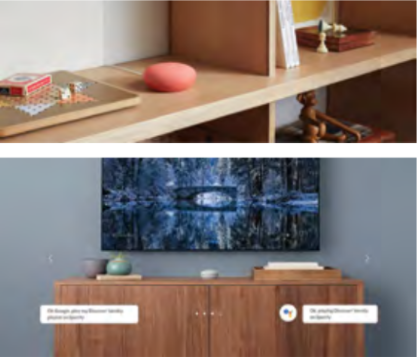WHY YOU NEED A SMART HOME AND HOW TO GET STARTED?
If you watch any of a plethora of sci-fi movies out there, you will likely encounter scenes where the protagonist walks into a home or some other building and the lights will turn on automatically. With just a hand clap or even with their voice alone, they would be able to turn on the music or adjust the thermostat, all without having to walk to a wall switch or pick up a remote control to do so. With a simple voice command, a virtual assistant would also be able tell the time, the weather and do much more. Sounds too good to be true? Well, buckle up because the future is just around the corner and may be in your home sooner than you think. Say hello to the Smart Home.
SO WHAT EXACTLY IS A SMART HOME?
In layman’s terms, a ‘smart home’ is a building, most likely a home or office, that is equipped with a variety of connected technologies that relies on the Internet to automate tasks, process orders or instructions and provide information upon request to make life easier. These technologies can be made up of a host of different devices but all of them are able to be remotely controlled or automated by the provision of artificial intelligence, voice commands or via your smart devices such as a mobile phone or tablet.
The size and scope of a smart home can vary depending on an aspiring owner’s budget and ambitions. You can simply have a smart speaker that can answer rudimentary queries much in the vein of Amazon’s Alexa or Google Home, or at the other end of the scale, an intricately interconnected setup of lights, air conditioners, home theatre systems, home security cameras and even smart coffee maker machines and much more. Controlling these devices are via voice commands or when preset conditions are met, such as adjusting the air conditioner temperature according to the weather, or opening the curtains and activating the coffee maker machine when you wake up in the morning.
Upon your return from outside, a smart home can be set to authenticate who you are with biometrics before unlocking the door for you, turn on the air conditioner and lights, play music off your favourite track list and more as soon as you step in. To say that it is the home of the future is not far off.
SO WHY DO I NEED A SMART HOME?
 Aside from impressing your neighbours, a smart home promises benefits in terms of saving time and money in the long run, enhancing security, and making domestic life much more easier and convenient. You will likely have to incur some financial investment to acquire these smart devices and upgrade your network as part of the process to create the foundation of a smart home. However, the rewards pay for themselves later on with the time saved in managing domestic operations and saving on your electricity bill over time through more efficient power management. The ideal smart home will have a variety of intelligent and connected devices such as smart LED lights as well as smart home appliances such as air conditioners and thermostats. In a smart home, these intelligent devices would be able to switch itself off or activate optimum energy saving modes when not in use. For example, a smart air conditioner can automatically adjust the temperature based on the day’s weather report. If it detects that the weather is blazing hot outside, it will run cooler and vice versa. Security motion sensors installed in a smart home can fulfill multiple purposes, turning off the power in empty rooms while monitoring for intruders. In the long run, every little bit adds up and offer potential savings on your electricity bill.Aside from impressing your neighbours, a smart home promises benefits in terms of saving time and money in the long run, enhancing security, and making domestic life much more easier and convenient. You will likely have to incur some financial investment to acquire these smart devices and upgrade your network as part of the process to create the foundation of a smart home. However, the rewards pay for themselves later on with the time saved in managing domestic operations and saving on your electricity bill over time through more efficient power management. The ideal smart home will have a variety of intelligent and connected devices such as smart LED lights as well as smart home appliances such as air conditioners and thermostats. In a smart home, these intelligent devices would be able to switch itself off or activate optimum energy saving modes when not in use. For example, a smart air conditioner can automatically adjust the temperature based on the day’s weather report. If it detects that the weather is blazing hot outside, it will run cooler and vice versa. Security motion sensors installed in a smart home can fulfill multiple purposes, turning off the power in empty rooms while monitoring for intruders. In the long run, every little bit adds up and offer potential savings on your electricity bill.
Aside from impressing your neighbours, a smart home promises benefits in terms of saving time and money in the long run, enhancing security, and making domestic life much more easier and convenient. You will likely have to incur some financial investment to acquire these smart devices and upgrade your network as part of the process to create the foundation of a smart home. However, the rewards pay for themselves later on with the time saved in managing domestic operations and saving on your electricity bill over time through more efficient power management. The ideal smart home will have a variety of intelligent and connected devices such as smart LED lights as well as smart home appliances such as air conditioners and thermostats. In a smart home, these intelligent devices would be able to switch itself off or activate optimum energy saving modes when not in use. For example, a smart air conditioner can automatically adjust the temperature based on the day’s weather report. If it detects that the weather is blazing hot outside, it will run cooler and vice versa. Security motion sensors installed in a smart home can fulfill multiple purposes, turning off the power in empty rooms while monitoring for intruders. In the long run, every little bit adds up and offer potential savings on your electricity bill.Aside from impressing your neighbours, a smart home promises benefits in terms of saving time and money in the long run, enhancing security, and making domestic life much more easier and convenient. You will likely have to incur some financial investment to acquire these smart devices and upgrade your network as part of the process to create the foundation of a smart home. However, the rewards pay for themselves later on with the time saved in managing domestic operations and saving on your electricity bill over time through more efficient power management. The ideal smart home will have a variety of intelligent and connected devices such as smart LED lights as well as smart home appliances such as air conditioners and thermostats. In a smart home, these intelligent devices would be able to switch itself off or activate optimum energy saving modes when not in use. For example, a smart air conditioner can automatically adjust the temperature based on the day’s weather report. If it detects that the weather is blazing hot outside, it will run cooler and vice versa. Security motion sensors installed in a smart home can fulfill multiple purposes, turning off the power in empty rooms while monitoring for intruders. In the long run, every little bit adds up and offer potential savings on your electricity bill.
One of the better perks of a smart home is convenience. Smart automation of home appliances and other connected tech can help to free up time for you to focus on more productive things. Among the potential use cases are employing these intelligent appliances to help you with your house chores at preset schedules. For example, you can order a robot vacuum cleaner to start cleaning the floor as soon as you step out of the house. A smart refrigerator can help place an order for more eggs or more milk if it detects that you are running low on them or track your products expiry dates. A smart air conditioner can even preemptively cool down the house before you even reach home!
One of the most practical benefits of having a smart home is that it can help make it a safer place. A series of connected security cameras and sensors set up around your home boundaries can help alert you when there are visitors, including unwanted ones. Intelligent light control sensors can help to illuminate the exterior and interior of your home when they detect movement which acts as both a deterrent to intruders and an aid to safely getting about the house without fumbling for wall switches all the time.
Ultimately, all these benefits combine to offer the most important thing of all – peace of mind that your home is well taken care of.
GREAT! HOW DO WE GET STARTED?
 Fortunately, setting up a smart home does not require rocket science, nor is there a need to tear out huge chunks of masonry from the walls or install a complicated nest of wires. The first step that you can take is to get a digital assistant such as Amazon’s Alexa or Google Assistant. Unfortunately, there are not many official options here in Malaysia to acquire them so you would have to order them online and have it shipped in from overseas.
Fortunately, setting up a smart home does not require rocket science, nor is there a need to tear out huge chunks of masonry from the walls or install a complicated nest of wires. The first step that you can take is to get a digital assistant such as Amazon’s Alexa or Google Assistant. Unfortunately, there are not many official options here in Malaysia to acquire them so you would have to order them online and have it shipped in from overseas.
While you can technically run a smart home off your mobile device, you will still derive the most benefits with a voice-activated smart speaker. Once you have got one installed and paired up with a good Internet connection, you will enjoy the luxury of being able to discuss and set your daily schedule or get answers to basic queries with your voice alone.
From there on, depending on how deep your wallet is, you can then eventually upgrade to a whole array of smart home enabled devices and appliances like intelligent refrigerators, robot vacuum cleaners, smart locks and many more. What is clear is that the future is on the horizon. Are you ready to live in a smart home?
TIPS!
“To enjoy a better experience in terms of functionality & response in terms of speed when using this Smart Home, it is recommended that users use the 4G LTE network.”
Sources: SHOUT 2019 BUMPER EDITION #CFMmalaysia #GetSmarterWithConsumerinfo #HakAndaKeutamaanKami #CFMshout #JENDELA
















